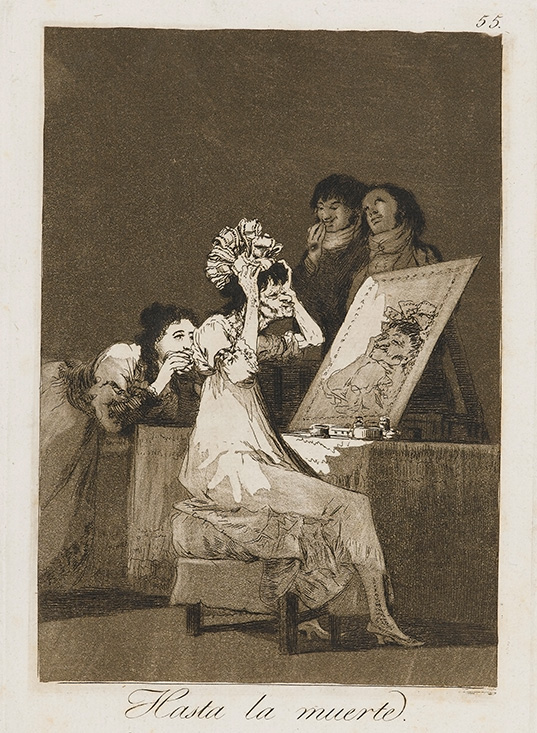To see the work of Francisco de Goya in present-day Los Angeles is disturbingly pertinent, echoing the turbulent anxieties of our time with a wickedly sadistic smile.
“Saw It: Francisco de Goya, Printmaker” at the Norton Simon Museum marks the first comprehensive installation of Goya’s work on the West Coast, encompassing the artist’s four major print series spanning over 200 works. Norton Simon’s rotating exhibition space located below the permanent collection on the first floor often feels disjointed and shoved aside; however, in this case, my descent downstairs into the lower galleries feels apt considering the subterranean quality of Goya’s imagery.
Goya’s etchings and aquatints featuring social-political satires and spectacles summon characters and stories of today; one can’t help but imagine Donald Trump or Matt Gaetz as Goya’s political donkeys (or any number of characters from the Real Housewives franchise). Phantasmic representations of everyday human suffering—wealth and class disparagement, oppression, shame, greed, and the brutalities of war—are reminiscent of our volatile reality—for instance, the sick juxtaposition of TikTok makeup tutorials alongside gruesome war footage that streams endlessly at our fingertips. Goya’s depictions of the horrific, comedic, and beautiful woes of the human condition—conditions shaped by a constantly mutating present—reflect the pains of yesterday, today, and tomorrow. The shadowy, veiled spaces that animate Goya’s observational imaginary allude to the mysteries and strangeness of life—critiquing the powerful and abstract apparatuses that govern conditions of living.
An unsettling angst followed me home from the exhibition, lingering in my pit, prompting a long jog to shake the horrifying truth that Goya’s world reveals. As I swallow the sticky polluted air, my feet pound the concrete to the beat of SZA’s song Ghost in the Machine—a track similarly preoccupied with humanity (and the lack thereof): Can you distract me from all the disaster? / Can you touch on me and not call me after? / Can you hate on me and mask it with laughter? / Can you lead me to the ark? What’s the password? / … / I need humanity / Y’all lack humanity / Drownin’ in vanity / Cravin’ humanity / … / You reflect all that godlike / You forget how to love somebody / I hate everybody, I hate everyone / Let’s talk about A.I., robot got more heart than I / Robot got future, I don’t / Robot get sleep, but I don’t power down / I’m wide open, I’m awake, I’m on autopilot / I’m out of my mind and I’m wide open.
Goya casts an endless call for humanity—a call that continues to grow as it cascades through time.


